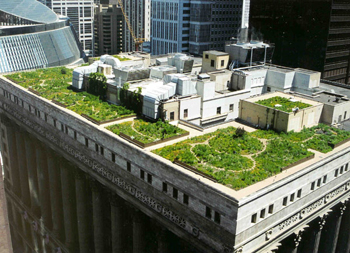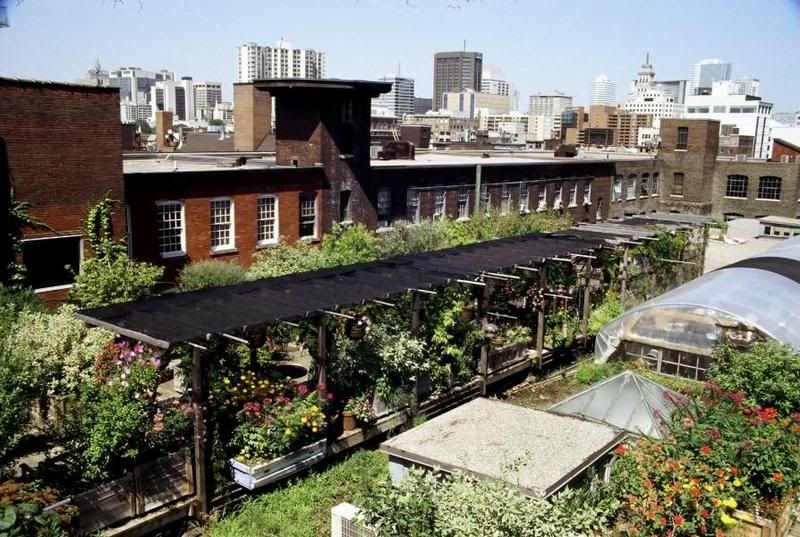
What: The Tokyo Metropolitan Government (TMG) made a mandatory regulation for contractors to submit a greening plan for the rooftops of new buildings in 2001 in order to combat rising temperatures in the urban environment.
In the heart of Tokyo, Japan, the skyline is a picture of modernization with touches of elegant and deceptively simplistic designs. A closer inspection reveals outlines of cherry blossoms and haphazard greenery sprouting from roofs.
The Tokyo Metropolitan Government would say that their plan has been a success, far beyond their expectations when they made a mandatory regulation for contractors to submit a greening plan for the rooftops of new buildings in 2001. For public buildings, 30-percent of the accessible part of the roof must be covered with vegetation on land over 250 square meters. The requirement is 20-percent for the private sector whose development is over 1,000 square meters. Companies who do not comply face hefty yearly fines. The law is aimed at reducing rising temperatures in the metropolitan city, but it has taken on its own path.
Rooftop gardens have become a competition between larger companies, particularly between hotels and malls. It has fueled older buildings into renovating their structure in order to place a garden over their roofs. And finally, it has caught the attention of developed nations all over the world. In a culture well known for the quality of their products from superconductors to cars, Japan has been able to blend modernization with ancient beliefs and values. For crane maker Komat’su, time is finally catching up.

Thirty eight years ago, the chairman of Komat’su began to plant greenery on top of the ten story building. Now, there are 1,000 different types of plants and flowers covering 1,300 square meters of the roof. There is an intricate irrigation system as well as research about rooftop gardens which has led to the installation of spongy floors and ways to deal with tree roots. The garden is a source of pride for the company, and the government has used it as a model when working out the details of the law.
On the seventh floor of the Tamagawa Takashimaya shopping center, there is a garden that has pushed the envelope for future developments. Covering over 4,100 square meters, the garden is complete with a waterfall that cascades down to a rock garden, as well as thirty different types of fruit trees that tower well over four meters tall, a pond, and various sculptures. You can click here for a bird's eye view map of the shopping center.
We now see that the role of the garden is the same as its early beginnings. The garden is a symbol of power over nature. The rooftop garden, in particular, is a strong message about power because the ability to wield nature from its natural environment and have it thrive is mythical. Kings used it as their way of showing the lowly class that they were, in some way "touched by God."
No comments:
Post a Comment